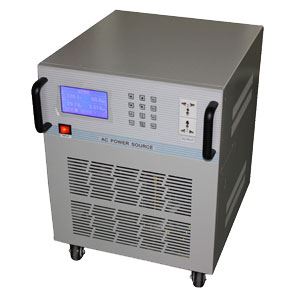5 KVA Frequency Converter, 120V 60Hz To 220V 50Hz

Why buy from us?
Lorem Ipsum is simply dummy text of the printing and typesetting industry.
Ask a Question About This Product
- Stock: In Stock
- Model: HZTOHZ-G7
- Weight: 1.00
- SKU: HZTOHZ-G7
Available Options
5 kVA AC power static frequency converter, converting 120V 60Hz to 220V 50Hz in one step by built-in step up transformer, also can change 220V to 120V, output frequency up to 400Hz, voltage up to 300V. This converter can be connected to computer.
Specification
| Model | HZ-60-1105 | |
| Capacity | 5 kVA | |
| Dimension | 510*430*560mm | |
| Weight | 90 kg | |
| Input | Voltage | 1 Phase 2 Wire: 110V/120V, 220V/230V/240V ± 10% (option *) |
| Frequency | 50 Hz, 60 Hz or 400 Hz ± 5% | |
| Output | Voltage, current | 110V Setting (Low grade): 0-150V, 41.6A |
| 220V Setting 0-300V (High grade): 0-300V, 20.8A | ||
| Load stabilization Rate | ≤±1% | |
| Frequency | 50Hz, 60Hz up to 400Hz adjustable Note: -When the output is 400Hz, the load capacity can only reach 50% of the rated capacity. -When the output is ≤120Hz, the load capacity can reach 100% of the rated value. -You can just adjust converter output frequency in the range (40-400Hz) for 400Hz option. | |
| Frequency Stability | ≤±0.01% | |
| Harmonic Distortion | Pure Sine Wave ≤2% | |
| Frequency meter | 4 digit, digital frequency meter, resolution 0.1Hz/Step | |
| Voltmeter | 4 digit, digital voltage meter, resolution 0.1V | |
| Ammeter | 4 digit, digital ammeter, resolution 0.1A | |
| Watt meter | 4 digit, digital Watt meter, resolution 0.1W | |
| Protection | With overload, short circuit, over temperature | |
| Instantaneous power failure protection and alarm device | ||
| Working Environment | Temperature | 0 - 40 deg.℃ |
| Humidity | 0 - 90% (Non condensation) | |
| Warranty | 18 months | |
* The input voltage is factory selected.
Little things about 50Hz and 60Hz
Nikola Tesla built the first 3 phase, alternating current (AC), generator system to power the lighting for the 1893 Columbian Exposition in the US to commemorate the discovery of the New World by Columbus in 1492. It was a 60 cycle system. It was so successful that 60 Hertz became the standard in the US and now North America. European competition investigated alternatives and found that below 50 cycles, one could perceive the fluctuations in an incandescent light bulb. That prompted Europe to standardize on 50 Hertz. India has 50 Hz because the UK adopted 50 Hz as their standard.
60Hz systems usually use 120V or thereabouts for the domestic power supply, while 50Hz systems tend to use 220V etc. This has the impact that house wiring needs to be twice the cross section for the 120V system for the same power. However the optimum system is accepted as around 220V (wire size and power required versus safety). In most of the US the 120V system is in tandem with the 240V US system that provides for the higher powered appliances like stoves and clothes dryers, while 120V does wall outlets and lights.














